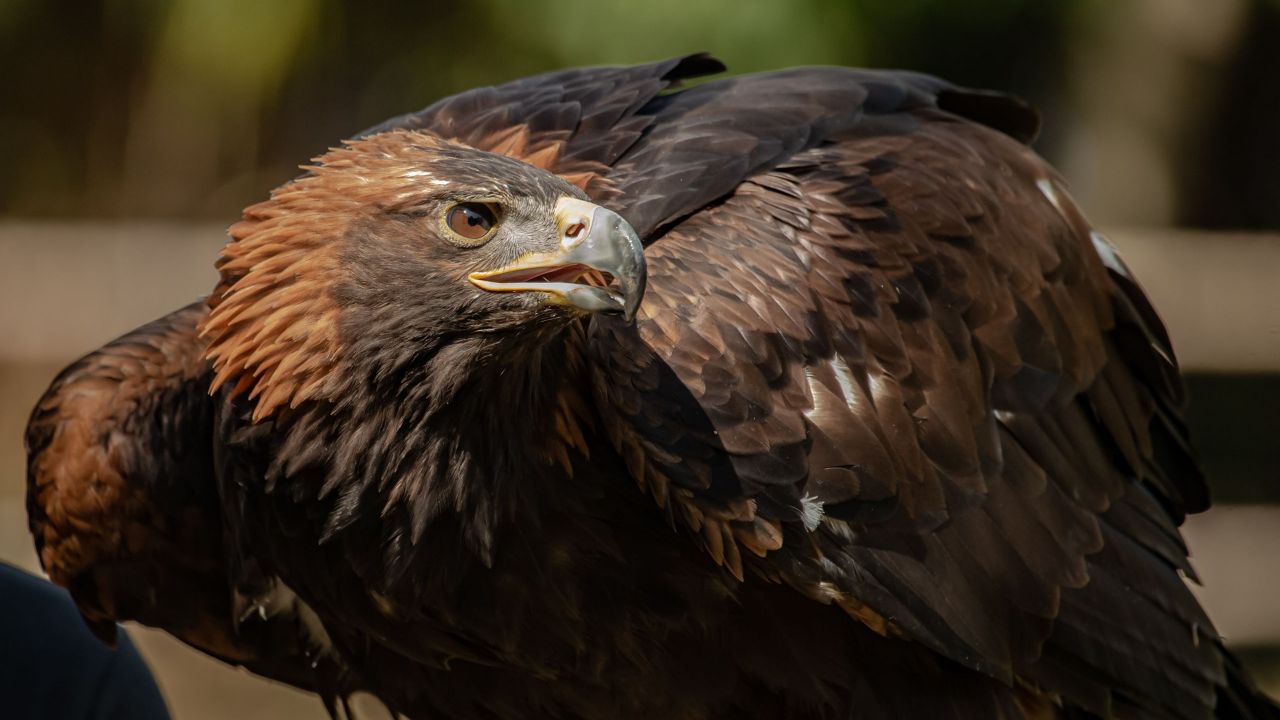
Golden Eagle (Aquila chrysaetos): a bird of prey living in the Northern Hemisphere.
Kingdom: | Animalia
Phylum: | Chordata
Class: | Aves
Order: | Falconiformes
Family: | Accipitridae
Genus: | Aquila
Species: | A. chrysaetos
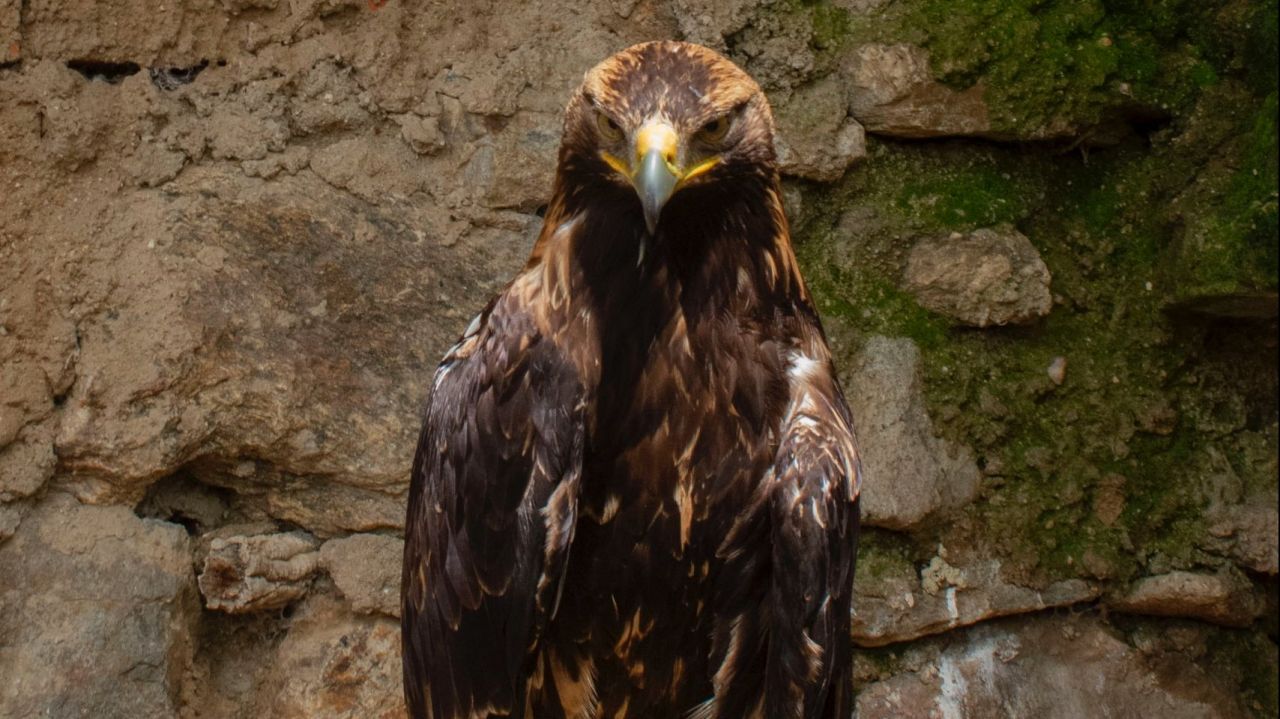
Size and Weight:
Golden Eagles are one of the largest birds in North America. Their wingspan stretches 72 to 86 inches. They measure 27.6 to 33.1 inches in length and weigh 6.4 to 13.2 pounds. Females are larger than males.
Appearance:
Adults are dark brown with a golden sheen on the back of the head and neck. Young golden eagles have neatly defined white patches at the base of the tail and in the wings. The amount of white in the wings varies among individuals, and a few lack white in the wings entirely.
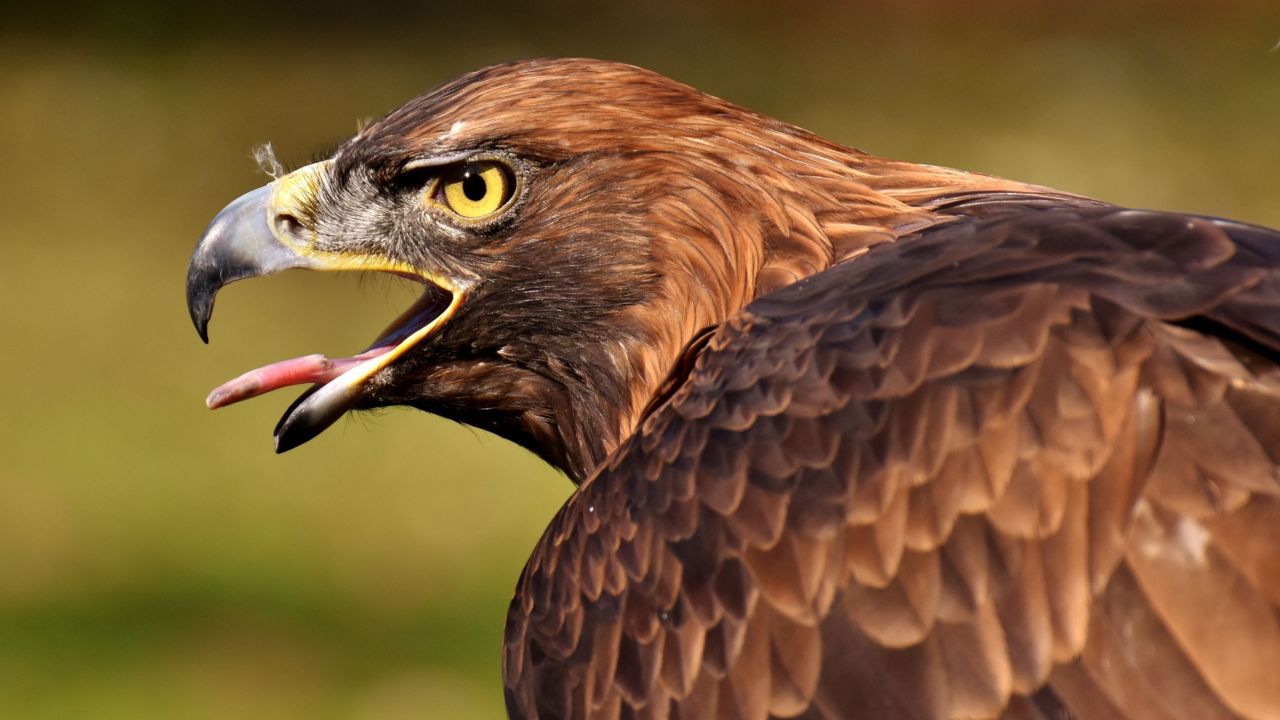
Diet:
Golden Eagles are carnivores that prey mainly on small mammals. While capable of killing large prey, they typically hunt small mammals, such as hares, rabbits, ground squirrels, prairie dogs, and marmots. They’re also known to kill larger mammals like seals, mountain goats, coyotes, badgers, and bobcats. These eagles are also scavengers, feeding on carrion. However, while the same size as the bald eagle, the golden eagle is less of a scavenger and more of a predator.
Habitat:
Golden eagles prefer to live in the grasslands of the Northern Hemisphere. They are found primarily in mountains up to 12,000 feet, canyonlands, rimrock terrain, and riverside cliffs and bluffs. Golden eagles nest on cliffs and steep escarpments in grassland, forest and other vegetated areas.
Geography:
Golden eagles can be found throughout the Northern Hemisphere in North America, Europe, and Asia.
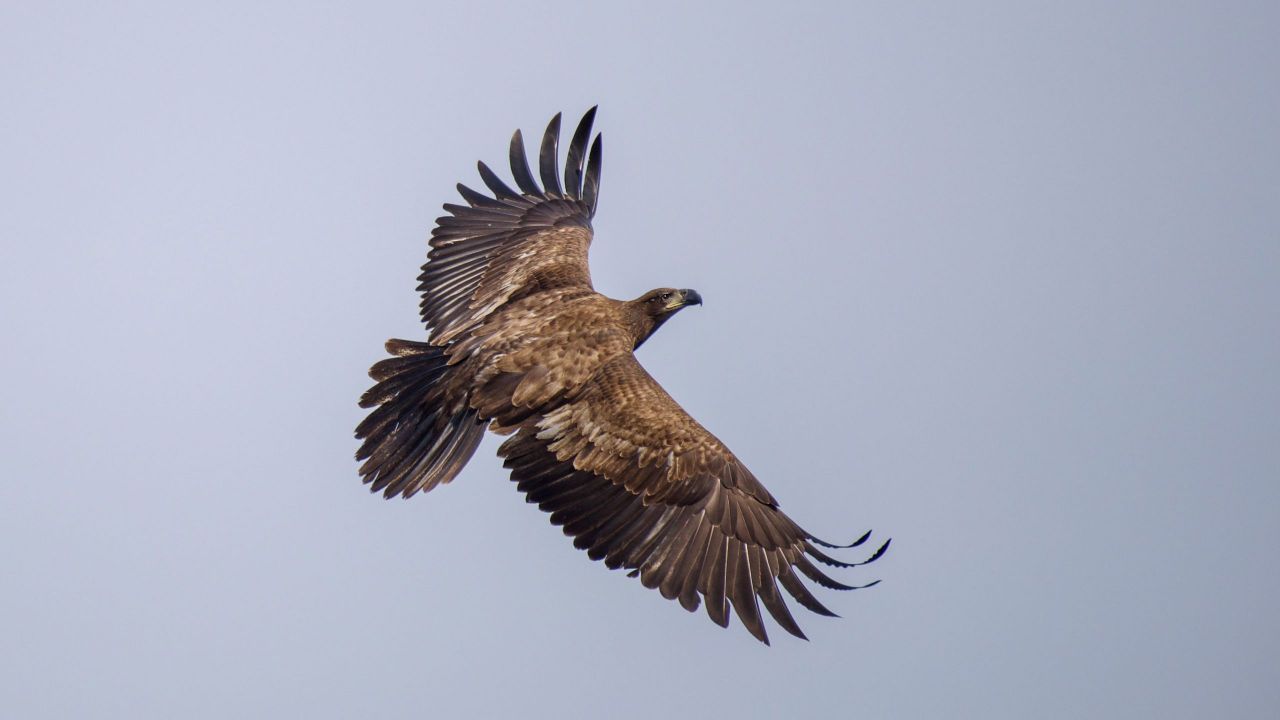
Breeding:
Golden eagles mate for life. During courtship, two birds circle high in the air, making shallow dives at each other. About one to three months before laying eggs, the pair will build a nest of sticks and vegetation. Their nest can be found on cliffs, in trees, on the ground, or in human-made structures, typically near their hunting grounds. They may use their nest site for many years and may have an alternate nest site. Their nests are huge, averaging 5-6 feet wide, 2 feet high, and enclosing a bowl about 3 feet by 2 feet deep.
The female will lay one to three eggs at a time. The eggs are 2.7 to 3.4 inches long and 1.9 to 2.5 inches wide. The incubation period is 41 to 45 days, followed by a nesting period of 45 to 81 days. When hatched, the chicks are weak, weighing about 3 ounces. They are partially covered with grayish-white down and their eyes are partially open. The young become largely independent of their parents 75 to 85 days after fledging.
Social Structure:
Golden eagles are typically found alone or in pairs. It is believed that they are monogomous, mating for life. The pair defends their territory against other golden eagles. Pairs are also known to hunt prey cooperatively during the breeding season. For example, one eagle diverts the animal’s attention while the second makes the kill. For their large size, these eagles possess astonishing speed and maneuverability for their size. They have been clocked diving at speeds close to 200 miles per hour.
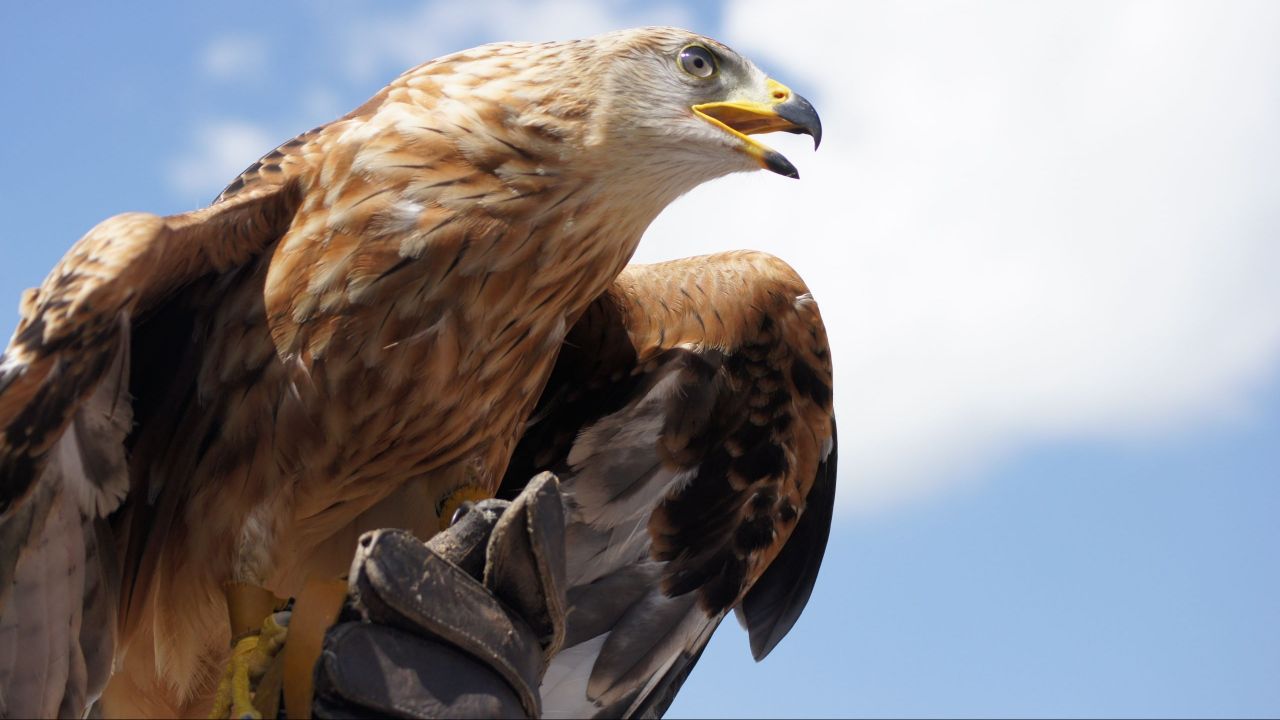
Lifespan:
The oldest golden eagle was recorded in Utah, reaching an age of at least 31 years and 8 months old.
Threats:
The greatest threat to the golden eagle is human activity. It’s estimated that more than 70% of recorded golden eagle deaths are attributable to human impact. Most recorded deaths are from collisions with vehicles, wind turbines, and other structures or from electrocution at power poles. However, newer designs have reduced these risks. Habitat loss is another major threat, as urbanization and agricultural developments have compromised their nesting and hunting grounds. While some eagles die after eating poisoned prey animals set out to control coyotes, others succumb to lead poisoning from ammunition in hunter-shot prey.

Conservation Status:
As of 2021, the IUCN has classified the golden eagle as of Least Concern on its Red List of Threatened Species.
Conservation Efforts:
In 1962, the U.S. Bald and Golden Eagle Protection Act outlawed harming these birds, their eggs, and their nests. Although this legislation remains in effect, humans are still golden eagles’ greatest threat.
Source: The Cornell Lab and the National Audobon Society.
